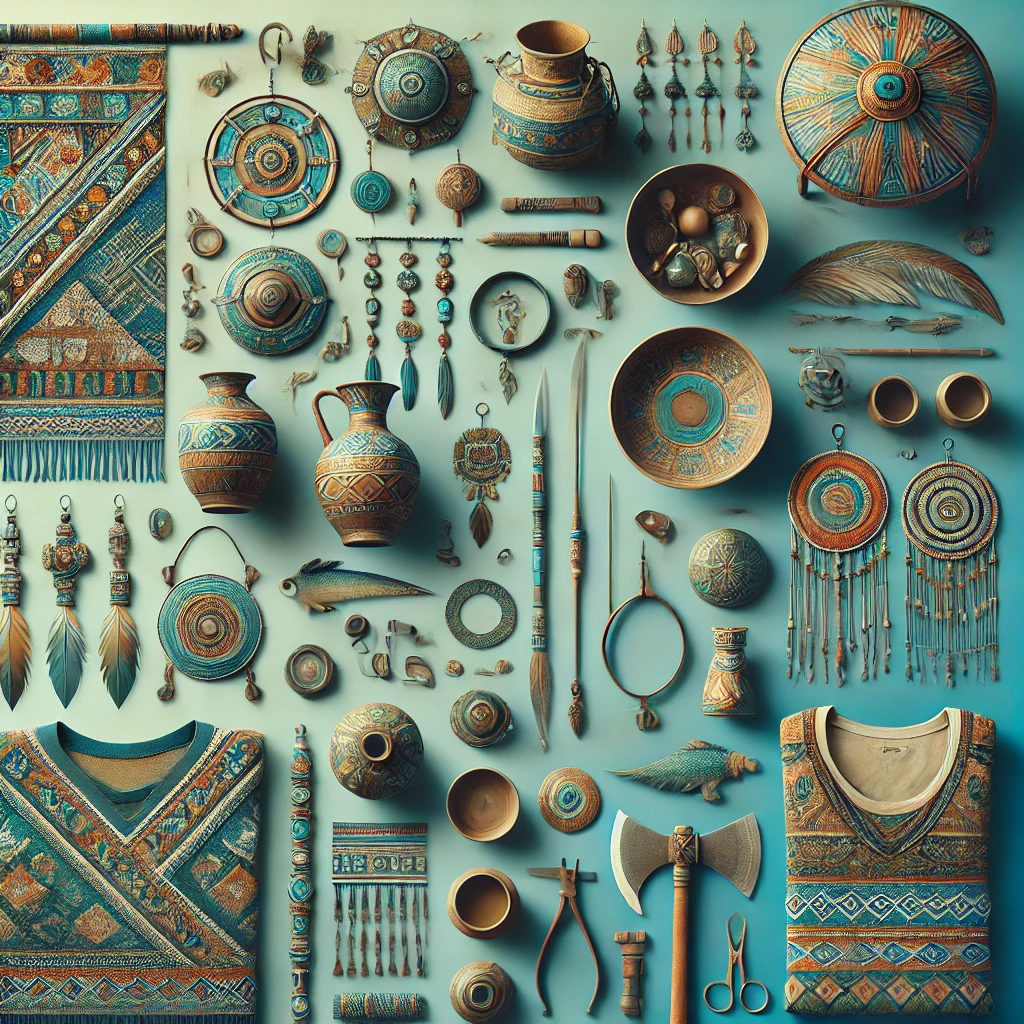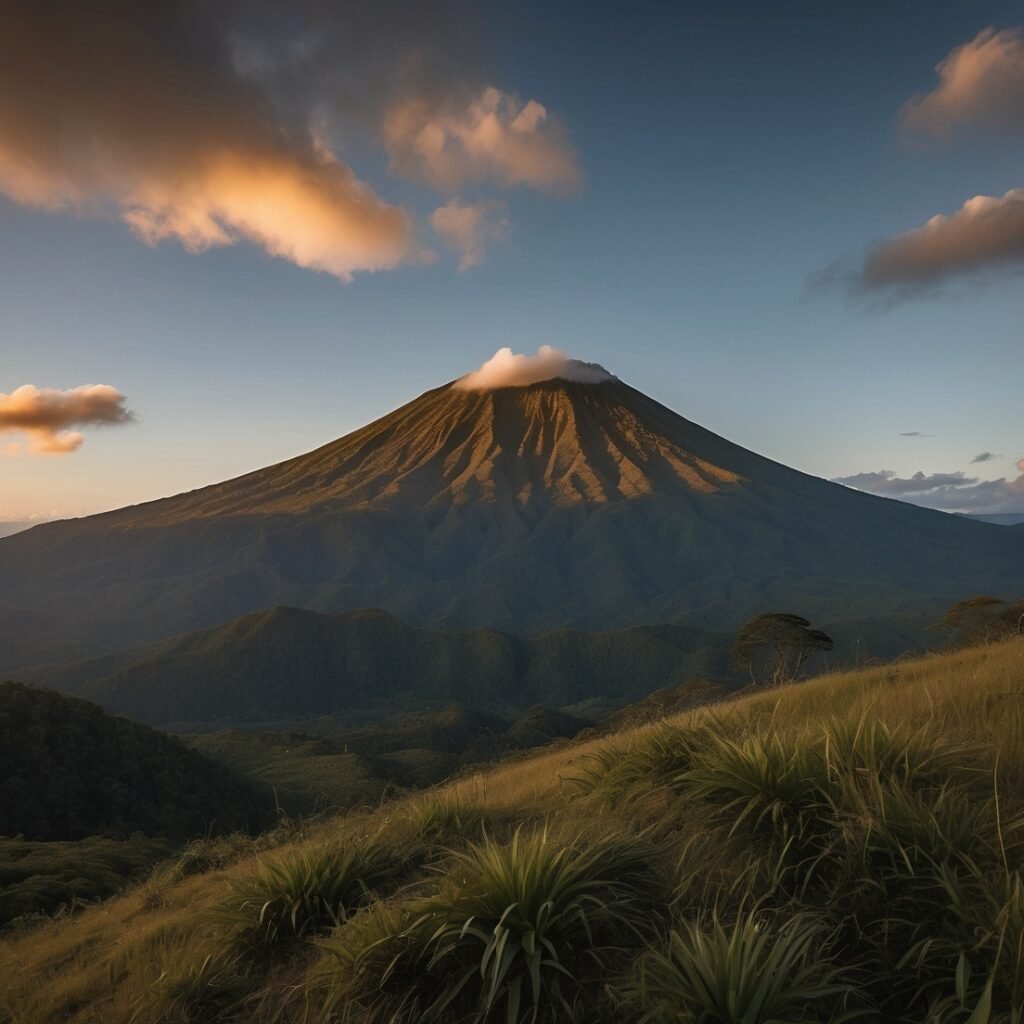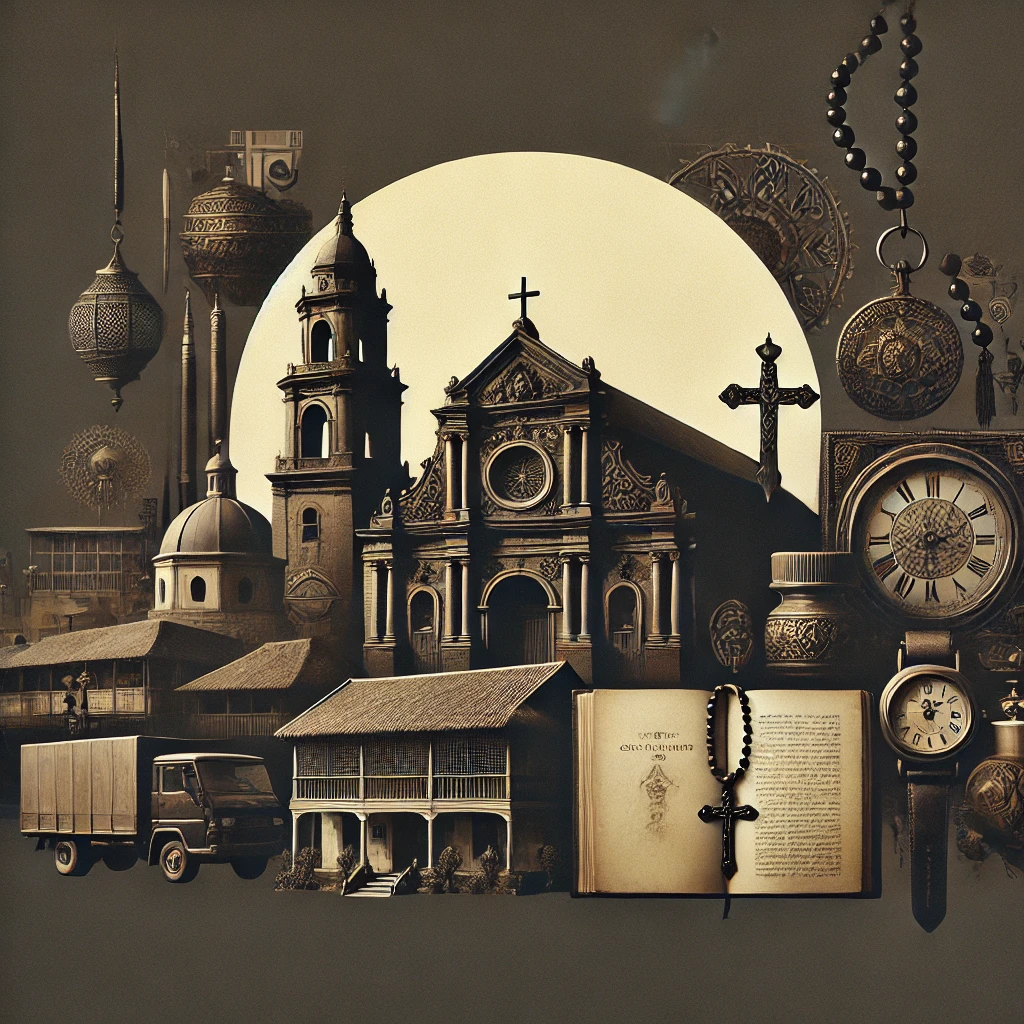Have you ever wondered what life was like in the Philippines before the Spanish arrived? It’s a fascinating journey into a world often overlooked in history books. The pre-colonial Philippines was a vibrant tapestry of diverse cultures, each with its own unique traditions, beliefs, and ways of life. In this blog, we’ll dive deep into this captivating era, exploring the rich heritage of the indigenous peoples who called these islands home long before foreign powers arrived on their shores.
The Dawn of Philippine Civilization: Ancient Roots and Early Settlements
From Prehistoric Times to Thriving Communities
Let’s start our journey at the very beginning. The story of pre-colonial Philippines stretches back thousands of years, with evidence of human habitation dating as far back as 67,000 years ago. The Callao Man, discovered in Cagayan, is one of the earliest known human remains in the archipelago. But it’s not just about ancient bones – archaeologists have uncovered a wealth of artifacts that paint a picture of how early Filipinos lived, from stone tools to intricate pottery.
As time passed, these early inhabitants developed increasingly complex societies. By around 4,000 BCE, we see the emergence of the Neolithic period in the Philippines, marked by advancements in agriculture, tool-making, and social organization. Rice cultivation became widespread, transforming the landscape and the way people lived. Settlements grew larger and more permanent, laying the groundwork for the diverse cultures that would flourish in the centuries to come.
The Rise of Barangays: The Building Blocks of Society
One of the most fascinating aspects of pre-colonial Philippine society was the barangay system. These were small, close-knit communities typically consisting of 30 to 100 families. Each barangay was led by a datu, who served as both political leader and judge. The barangay wasn’t just a political unit – it was the foundation of social life, economic activity, and cultural identity.
Within the barangay, there was a complex social structure. At the top were the maginoo class, which included the datu and other nobles. Below them were the timawa or freemen, followed by the alipin or dependent class. It’s important to note that this system was more fluid than the rigid caste systems found in other parts of the world. Social mobility was possible, and the relationships between classes were often based on mutual obligations rather than strict hierarchies.
A Melting Pot of Cultures: Diversity in Pre-Colonial Philippines
Islands of Diversity: Regional Variations
One of the most striking features of pre-colonial Philippines was its incredible diversity. With over 7,000 islands, it’s no surprise that a wide variety of cultures developed across the archipelago. From the Ilocanos in the north to the Tausugs in the south, each group had its own language, customs, and traditions. This diversity wasn’t just a matter of geography – it reflected the complex history of migrations, trade, and cultural exchange that shaped the islands over millennia.
Let’s take a closer look at some of these cultures. In the Cordillera region of northern Luzon, groups like the Ifugao were renowned for their impressive rice terraces, which are still marveled at today. In the Visayas, the Pintados were known for their intricate tattoos, which covered their bodies and signified social status and achievements. And in Mindanao, the Maranao people developed a rich tradition of epic poetry and metalwork.
The Influence of Neighboring Civilizations
While the Philippines developed its own unique cultures, it wasn’t isolated from the rest of the world. Trade and cultural exchange with neighboring civilizations played a significant role in shaping pre-colonial Philippine society. Chinese traders had been visiting the islands since at least the 10th century, bringing with them goods like porcelain and silk, as well as cultural influences that can still be seen in Filipino cuisine and language today.
But it wasn’t just China that left its mark. Indian influence can be seen in elements of Philippine mythology and in the Sanskrit-derived words found in many Philippine languages. And let’s not forget the impact of Islamic civilization, which began to spread in the southern Philippines from the 13th century onward. This led to the establishment of Muslim sultanates in Mindanao and Sulu, adding another layer to the rich cultural tapestry of the pre-colonial Philippines.
Economic Life in Pre-Colonial Times: Trade, Crafts, and Agriculture
Masters of the Sea: Maritime Trade and Seafaring
One of the most impressive aspects of pre-colonial Philippine society was its mastery of maritime trade. The islands were strategically located along major trade routes, and Filipino seafarers were renowned for their skill and bravery. They built sophisticated vessels like the balangay, which could navigate both rivers and open seas. These ships allowed them to engage in trade with distant lands, from China and Japan to Borneo and beyond.
What were they trading? The Philippines was rich in natural resources that were highly prized by foreign merchants. Gold, pearls, and spices were among the most sought-after exports. In return, Filipino traders acquired luxury goods like Chinese porcelain, Indian textiles, and Arab glassware. This vibrant trade network not only brought material wealth but also facilitated the exchange of ideas and technologies, contributing to the cultural dynamism of pre-colonial Philippine society.
Artisans and Craftsmen: The Beauty of Filipino Handicrafts
The pre-colonial Filipinos were not just traders – they were also skilled artisans. Every region had its own specialties, from the intricate weaving of the Itneg people to the metalwork of the Maranao. Textiles were particularly important, with different groups developing their own distinctive patterns and techniques. The piña cloth, made from pineapple fiber, was just one example of the ingenuity of Filipino weavers.
Jewelry-making was another area where pre-colonial artisans excelled. Gold was abundant in many parts of the Philippines, and goldsmiths created stunning pieces that reflected the wealth and sophistication of their society. The famous “Surigao Treasure,” a collection of gold objects dating back to the 10th-13th centuries, gives us a glimpse of the extraordinary skill of these ancient craftsmen.
Abundance from the Land: Agricultural Practices
While trade and crafts were important, agriculture remained the backbone of the pre-colonial Philippine economy. Rice was the staple crop in many areas, and farmers developed sophisticated irrigation systems to maximize their yields. The Ifugao rice terraces, mentioned earlier, are a testament to the ingenuity and hard work of pre-colonial farmers.
But it wasn’t just rice. Taro, yams, and other root crops were also widely cultivated. Coconuts, bananas, and a variety of fruits added diversity to the diet. In coastal areas, fishing was a crucial part of both subsistence and trade. The combination of agriculture, fishing, and gathering of forest products allowed pre-colonial Filipinos to sustain large populations and complex societies.
Spiritual Life and Beliefs: The Animistic Worldview
Anito and Diwata: The Spirit World
Religion played a central role in pre-colonial Filipino life, and the dominant belief system was animism. This worldview held that spirits, known as anito or diwata, inhabited the natural world and influenced human affairs. These spirits could be ancestral, nature spirits, or deities associated with specific aspects of life.
The relationship between humans and spirits was complex. People sought to maintain harmony with the spirit world through offerings, rituals, and proper behavior. Babaylans, who were often women, served as spiritual leaders and mediators between the human and spirit worlds. They performed healing rituals, led ceremonies, and provided guidance on spiritual matters.
Myths and Legends: The Oral Tradition
Pre-colonial Filipinos had a rich tradition of mythology and folklore. These stories weren’t just entertainment – they were a way of passing down cultural values, explaining natural phenomena, and preserving historical memory. Epic poems like the Hudhud of the Ifugao and the Darangen of the Maranao are not only beautiful works of literature but also important sources of cultural knowledge.
One fascinating aspect of Philippine mythology is its diversity. While there are some common themes, each ethnic group had its own pantheon of gods and heroes. For example, the Tagalog had Bathala as their supreme deity, while the Bisaya believed in Kaptan and Maguayen. These myths reflected the unique experiences and environments of different Filipino communities.
Warfare and Conflict: Defending Honor and Territory
Warriors and Weapons: The Art of War
While pre-colonial Philippine societies were generally peaceful, they were not strangers to conflict. Warfare could erupt over territorial disputes, personal honor, or competition for resources. Each ethnic group had its own martial traditions, with warriors trained in the use of weapons like the kris (a wavy-bladed sword), the kampilan (a single-edged long sword), and various types of spears and bows.
Interestingly, warfare in pre-colonial Philippines often had ritualistic aspects. Among some groups, battles were preceded by challenges and boasts, and the goal was often to capture prisoners or settle scores rather than to annihilate the enemy. This doesn’t mean that conflicts weren’t serious – they could be quite deadly – but it reflects a different approach to warfare than what we might see in other parts of the world.
Fortifications and Strategies: Defending Home and Hearth
To protect themselves from raids and invasions, many pre-colonial Filipino communities built impressive fortifications. In the Cordillera region, villages were often situated on hilltops and surrounded by stone walls. In other areas, communities might be protected by wooden palisades or take advantage of natural defenses like rivers or cliffs.
Naval warfare was also important, given the archipelagic nature of the Philippines. Coastal communities developed strategies for defending against sea-borne attacks, while also launching their own maritime expeditions. The balangay, mentioned earlier as a trading vessel, could also serve as a warship when needed.
Art and Culture: Expressions of Identity and Beauty
Music and Dance: The Rhythm of Life
Music and dance were integral parts of pre-colonial Filipino culture, playing important roles in rituals, celebrations, and everyday life. Each ethnic group had its own musical traditions, using instruments like gongs, bamboo flutes, and various types of drums. The kulintang, a set of tuned gongs, is still played today in parts of Mindanao and is a beautiful example of the continuity of pre-colonial musical traditions.
Dance was equally important, often telling stories or reenacting important events. The singkil of the Maranao, which depicts a princess navigating through bamboo poles, and the binaylan of the Panay Bukidnon, a healing dance, are just two examples of the rich dance traditions that developed in pre-colonial times.
Visual Arts: From Body Art to Architecture
The visual arts of pre-colonial Philippines were diverse and sophisticated. We’ve already mentioned the intricate tattoos of the Pintados, but body modification as an art form was practiced in many parts of the archipelago. Jewelry, both for adornment and as a sign of status, was another important form of visual expression.
Architecture, too, reflected the artistic sensibilities of pre-colonial Filipinos. The iconic bahay kubo, or nipa hut, with its elevated living area and thatched roof, was not just a practical response to the tropical climate but also an expression of Filipino aesthetic values. In areas with strong Islamic influence, we see the development of unique architectural styles, as exemplified by the torogan, the royal houses of Maranao datus.
The Legacy of Pre-Colonial Philippines: Continuity and Change
Echoes of the Past in Modern Filipino Culture
As we conclude our journey through pre-colonial Philippines, it’s worth reflecting on how this rich heritage continues to influence Filipino culture today. Despite centuries of colonial rule and the forces of modernization, many aspects of pre-colonial culture have survived or been revitalized.
We can see this in the continued use of indigenous languages, the practice of traditional crafts, and the celebration of festivals with pre-colonial roots. Even in urban areas, values like bayanihan (communal unity and cooperation) harken back to the spirit of the ancient barangays. The resilience of Filipino culture, its ability to adapt while maintaining a connection to its roots, is perhaps one of the most remarkable legacies of the pre-colonial era.
Preserving and Celebrating Indigenous Heritage
In recent years, there’s been a growing movement to recognize and preserve the Philippines’ indigenous heritage. This includes efforts to protect ancestral lands, revitalize traditional practices, and incorporate indigenous knowledge into education and development programs. It’s an acknowledgment that the pre-colonial past is not just a matter of historical interest but a living heritage that has much to offer contemporary Filipino society.
As we look to the future, the story of pre-colonial Philippines reminds us of the incredible diversity and resilience of human cultures. It challenges us to look beyond the colonial narrative and appreciate the depth and complexity of indigenous Filipino civilizations. By understanding and celebrating this rich heritage, we gain not only a fuller picture of the past but also valuable insights for building a more inclusive and culturally vibrant future.
Disclaimer: While every effort has been made to ensure the accuracy of the information presented in this blog, our understanding of pre-colonial Philippine history is continually evolving as new archaeological discoveries and historical research come to light. Readers are encouraged to consult academic sources for the most up-to-date information. If you notice any inaccuracies, please report them so we can correct them promptly.




